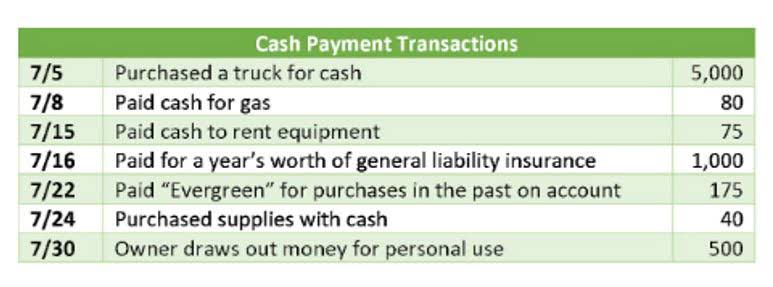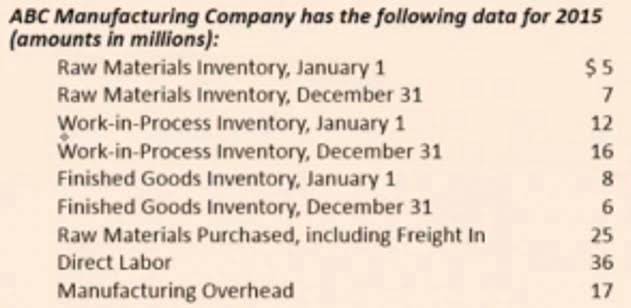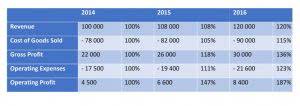Debt-to-Income DTI Ratio: What’s Good and How To Calculate It
In fact, debt can enable the company to grow and generate additional income. But if a company has grown increasingly reliant on debt or inordinately so for its industry, potential investors will want to investigate further. Monthly debt payments are any payments you make to pay back a creditor or lender for money you borrowed. To lower your DTI ratio, pay off as much of your current debt as possible before applying for a mortgage.
In most cases, this would be considered a sign of high risk and an incentive to seek bankruptcy protection. Changes in long-term debt and assets tend to affect D/E ratio the most because the numbers involved tend to be larger than for short-term debt and short-term assets. If investors want to evaluate a company’s short-term leverage and its ability to meet debt obligations that must be paid over a year or less, they can use other ratios.
Before applying for new credit, consider whether any of your current credit accounts may meet your needs. Relative to your income before accounting advisory taxes, your debt is at a manageable level. You most likely have money left over for saving or spending after you’ve paid your bills.
This stock pays an annual dividend of $4.08, which amounts to a dividend yield of 3.76%. The beta is 0.65, so DTE’s price volatility has been lower than the market average. Instead, the DTIs you’ll need to qualify will be different for different lenders and different types of loans.
- To get a clearer picture and facilitate comparisons, analysts and investors will often modify the D/E ratio.
- And we have unwavering standards for how we keep that integrity intact, from our research and data to our policies on content and your personal data.
- The company has $348.00 million in cash and $20.97 billion in debt, giving a net cash position of -$20.62 billion or -$99.98 per share.
If interest rates are higher when the long-term debt comes due and needs to be refinanced, then interest expense will rise. To calculate your estimated DTI ratio, simply enter your current income and payments. A higher credit score or a larger down payment as a percentage of the home’s value may help you overcome a “too-high” DTI. The higher your DTI ratio, the more likely you are to struggle with qualifying for a mortgage and making your monthly mortgage payments.
How debt-to-income ratio is calculated
If the company takes on additional debt of $25 million, the calculation would be $125 million in total liabilities divided by $125 million in total shareholders’ equity, bumping the D/E ratio to 1.0x. Investors and business stakeholders analyze a company’s debt-to-equity ratio to assess the amount of financial leverage a company is using. A business that ignores debt financing entirely may be neglecting important growth opportunities. The benefit of debt capital is that it allows businesses to leverage a small amount of money into a much larger sum and repay it over time. This allows businesses to fund expansion projects more quickly than might otherwise be possible, theoretically increasing profits at an accelerated rate. As a general guideline, 43% is the highest DTI ratio a borrower can have and still get qualified for a mortgage.
These balance sheet categories may include items that would not normally be considered debt or equity in the traditional sense of a loan or an asset. Because the ratio can be distorted by retained earnings or losses, intangible assets, and pension plan adjustments, further research is usually needed to understand to what extent a company relies on debt. Ideally, though, you’ll want to keep your DTIs as low as possible, regardless of lenders’ limits.
Income Statement
Your back-end DTI compares your total monthly gross income to the sum of your total estimated housing expenses and your total monthly minimum payments for your other debts. Debt-to-equity is a gearing ratio comparing a company’s liabilities to its shareholder equity. Typical debt-to-equity https://www.wave-accounting.net/ ratios vary by industry, but companies often will borrow amounts that exceed their total equity in order to fuel growth, which can help maximize profits. A company with a D/E ratio that exceeds its industry average might be unappealing to lenders or investors turned off by the risk.
Debt-to-Income Ratio Limitations
If you transferred your balances from your high-interest rate cards to a low-interest credit card, your monthly payments would decrease. As a result, your total monthly debt payments and your DTI ratio would decrease, but your total debt outstanding would remain unchanged. The preference for low DTI ratios makes sense since lenders want to be sure a borrower isn’t overextended meaning they have too many debt payments relative to their income.
There also are many other metrics used in corporate accounting and financial analysis used as indicators of financial health that should be studied alongside the D/E ratio. A steadily rising D/E ratio may make it harder for a company to obtain financing in the future. The growing reliance on debt could eventually lead to difficulties in servicing the company’s current loan obligations. Very high D/E ratios may eventually result in a loan default or bankruptcy. In the banking and financial services sector, a relatively high D/E ratio is commonplace. Banks carry higher amounts of debt because they own substantial fixed assets in the form of branch networks.
What Does a High Debt-to-Equity Ratio Mean?
Please note this calculator is for educational purposes only and is not a denial or approval of credit. The accuracy of the DTI calculation is based on the accuracy and completeness of the information provided by you. We’d like to share more about how we work and what drives our day-to-day business. In the last 12 months, operating cash flow was $3.22 billion and capital expenditures -$3.93 billion, giving a free cash flow of -$711.00 million. In the last 12 months, DTE had revenue of $12.75 billion and earned $1.40 billion in profits.
In most cases, lenders won’t include installment debts like car or student loan payments as part of your DTI if you have just a few months left to pay them off. The debt-to-equity ratio (D/E) is a financial leverage ratio that can be helpful when attempting to understand a company’s economic health and if an investment is worthwhile or not. It is considered to be a gearing ratio that compares the owner’s equity or capital to debt, or funds borrowed by the company. Some business analysts and investors see more meaning in long-term debt-to-equity ratios because long-term debt establishes what a company’s capital structure looks like for the long term. While high levels of long-term company debt may cause investors discomfort, on the plus side, the obligations to settle (or refinance) these debts may be years down the road.
If both companies have $1.5 million in shareholder equity, then they both have a D/E ratio of 1. On the surface, the risk from leverage is identical, but in reality, the second company is riskier. Debt-financed growth may serve to increase earnings, and if the incremental profit increase exceeds the related rise in debt service costs, then shareholders should expect to benefit. However, if the additional cost of debt financing outweighs the additional income that it generates, then the share price may drop. The cost of debt and a company’s ability to service it can vary with market conditions.
However, this will also vary depending on the stage of the company’s growth and its industry sector. Newer and growing companies often use debt to fuel growth, for instance. D/E ratios should always be considered on a relative basis compared to industry peers or to the same company at different points in time. Wells Fargo Corporation (WFC) is one of the largest lenders in the U.S. The bank provides banking and lending products that include mortgages and credit cards to consumers.
Your gross income is your pay before taxes and other deductions are taken out. The debt-to-income ratio is the percentage of your gross monthly income that goes to paying your monthly debt payments. The DTI ratio does not distinguish between different types of debt and the cost of servicing that debt. Credit cards carry higher interest rates than student loans, but they’re lumped in together in the DTI ratio calculation.



















